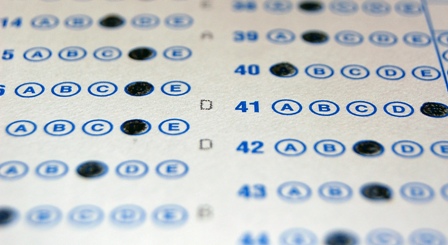Note: Here’s a piece that was written before the March 5th announcement that the SAT will be undergoing substantial changes for 2016. It seems that the College Board is trying to address some of objections that critics have increasingly raised about the SAT in particular, and standardized tests in general. A full treatment of the changes to SAT will be forthcoming in our next post.
 It’s the season of admissions notifications. It's also the season when next year’s crop of applicants get going on their preparation. To a far too significant degree, it’s the harvest season for those three little letters that don’t mean anything but somehow mean everything, SAT. (Literally, the letters SAT no longer stand for anything.) This week, some reflections on the SAT and its effects were occasioned by a piece in The New Yorker. Regular correspondent Elizabeth Kolbert reported on her own outing as an adult subjecting herself to the nearly five-hour Junior-year ritual: 8am, no caffeine, timed writing, bubbling, calculators out, calculators away, exhaustion, panic. She, in turn, was inspired by writer Debbie Stier’s, The Perfect Score Project: Uncovering the Secrets of the SAT. Stier’s book recounts her adventures and insights as she tried to accompany her high school-aged kids through their own SAT experience.
It’s the season of admissions notifications. It's also the season when next year’s crop of applicants get going on their preparation. To a far too significant degree, it’s the harvest season for those three little letters that don’t mean anything but somehow mean everything, SAT. (Literally, the letters SAT no longer stand for anything.) This week, some reflections on the SAT and its effects were occasioned by a piece in The New Yorker. Regular correspondent Elizabeth Kolbert reported on her own outing as an adult subjecting herself to the nearly five-hour Junior-year ritual: 8am, no caffeine, timed writing, bubbling, calculators out, calculators away, exhaustion, panic. She, in turn, was inspired by writer Debbie Stier’s, The Perfect Score Project: Uncovering the Secrets of the SAT. Stier’s book recounts her adventures and insights as she tried to accompany her high school-aged kids through their own SAT experience.
But the thing that struck home the most (not for the first time) in reading Kolbert’s piece was the perversity of the the whole SAT edifice: the power of the test, the culture it’s inspired, the industries that have appeared, grown, and sprawled around it. At one moment in reading Kolbert, we’re reminded that the SAT is a historical accident. It was born as a half-baked lite IQ test. It came to play a role in college placement by chance and then grew into the central pillar of admissions by a fluke. Everything that’s grown up around it -- from Stanley Kaplan to “The Big Blue Book” to even our own test prep services -- is part of an effort to address problems that never should have occurred in the first place. Rather than recognize the folly and back off, we’ve doubled down. In some ways, the SAT is like the corn feed in the post-War cattle industry. Corn prepared beef for the marketplace quickly and effectively. It seemed expedient at first, but in time it ravaged those we gave it to to such a degree that it required remedies (antibiotics, in the one case; tutoring empires, in the other) that only further distorted the food chain.
College admissions is a terrifying process these days. As Kolbert reminds us, just sitting for the SAT is harrowing in its own right. At Partners with Parents, our instinct is always to try to cool things off and help our families moderate the stress and anxiety. Sometimes, even we need a reminder that the SAT should be put in its proper place. Colleges keep threatening to phase the test out of their admissions process and we would applaud that all the way. In the meantime, we try to help our students prepare but also to help them keep their heads.











